Welcome back to Week 46 in my weekly reports analyzing the Covid-19 pandemic and its effects on the country and higher education in the new Biden-Harris administration. For those of you reading this on my blog, Off the Silk Road, I have also launched a newsletter, where these reports can be sent directly to your email each week. Click here to subscribe.
Last week, we discussed the effects of severe weather across the country on vaccinations and examined college outbreaks. This week, we will show why the U.S. is currently at a critical point in the pandemic as a third vaccine is on the horizon.
A national look
Earlier this week, the U.S. marked the devastating milestone of 500,000 confirmed deaths from Covid-19. It is an incalculable loss of brothers, sisters, mothers, fathers, grandparents, kids, aunts, uncles, neighbors and Americans — one in every 670 of them. “The living find themselves amid vacant places once occupied by their spouses, parents, neighbors and friends — the nearly 500,000 coronavirus dead,” The New York Times’ Julie Bosman writes. “Across America, the holes in communities, punctured by sudden death, have remained.” 500,000 lives lost is the result of a failed national response, misinformation and disinformation, and a lack of leadership. With hope on the horizon, we grieve and we remember.
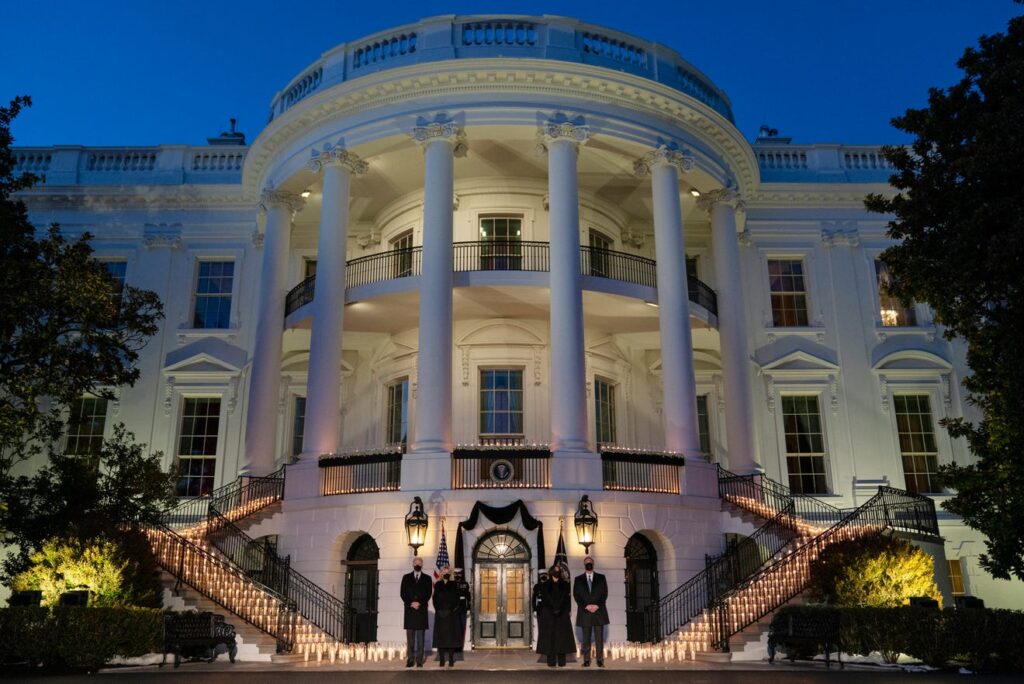
All major indicators of viral transmission in the United States continued to fall this week; however, we have seen the rate of decline slowing. This plateau is most likely the result of holiday reporting delays, but we must remain vigilant. Variants continue to spread throughout the country, with Florida currently recording the highest number of B.1.1.7 cases in any U.S. state. This week, we are learning more about new variants first discovered in California and New York City. The variant in California appears to be more contagious, according to preliminary data, and the variant in New York City appears to contain a mutation that may evade some of the effectiveness of vaccines. As concerning as this news is, we must understand that viruses mutate and we need more data to examine each variant as it emerges.
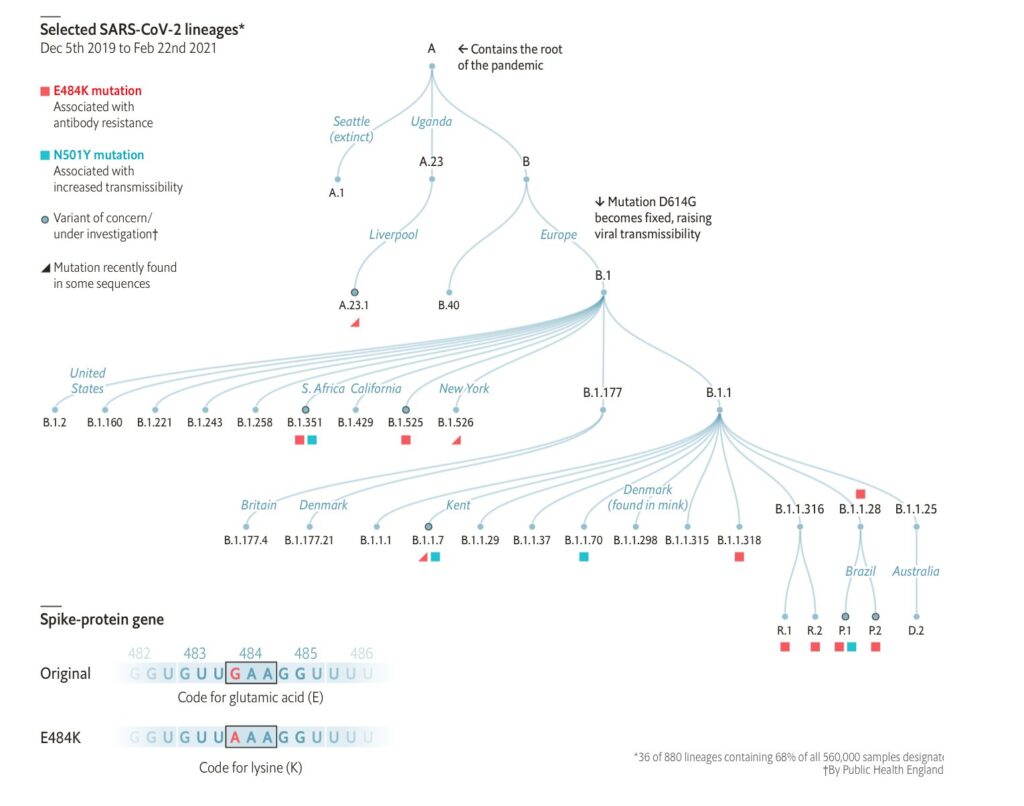
This week, President Biden continues to take decisive action against the pandemic, launching partnerships with businesses to help with vaccine rollout. His administration announced a plan this week to deliver more than 25 million masks to over 1,300 Community Health Centers across the country, as well as 60,000 food pantries and soup kitchens. More than 25 million washable masks will be delivered.
Let’s take a look at some of the latest scientific developments:
- According to a CDC report, nine clusters of Covid-19 cases were reported this winter at six elementary schools in Georgia. Two clusters involved probable educator-to-educator transmission that was followed by educator-to-student transmission in classrooms and resulted in approximately one-half (15 of 31) of school-associated cases. This shows that teacher vaccinations are a critical step towards making schools safe.
- Some good news: South Africa is back to its pre-B.1.351 baseline in covid cases. There’s no proof this variant is more infectious, according to Scripps Research Translational Institute’s Dr. Eric Topol. Its immune evasion is enough to explain how it took off, and the descent occurred without vaccines.
- According to a trial published in JAMA, college volunteers with 2 hours’ training called a roster of 6-9 Meals on Wheels participants 2-5 times per week (elders’ choice) to ask how they are, which reduced loneliness, depression, and anxiety.
- A study led by Texas A&M researchers found that rural residents are significantly less likely to participate in several Covid-19-related preventive health behaviors. This reality could exacerbate existing disparities in health access and outcomes for rural Americans.
- Two studies from the CDC shed light on the risks of indoor fitness classes. One from a gym in Hawaii found 21 cases linked to one fitness instructor. Another one in Chicago found that 55 Covid-19 cases were identified among 81 attendees of indoor high-intensity classes. Most attendees (76%) wore masks infrequently, including persons with (84%) and without Covid-19 (60%).
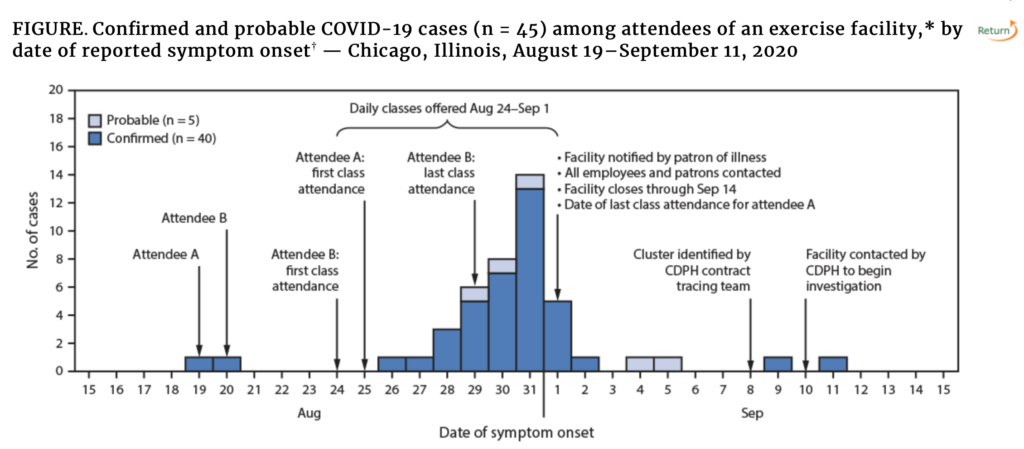
As we continue our fight against the pandemic, it is important that we understand the risks of various events and activities. A commentary published in JAMA showed the adjusted odds ratios based on contact tracing data. Indoor dining, as well as bars and coffee shops, are high-risk environments.
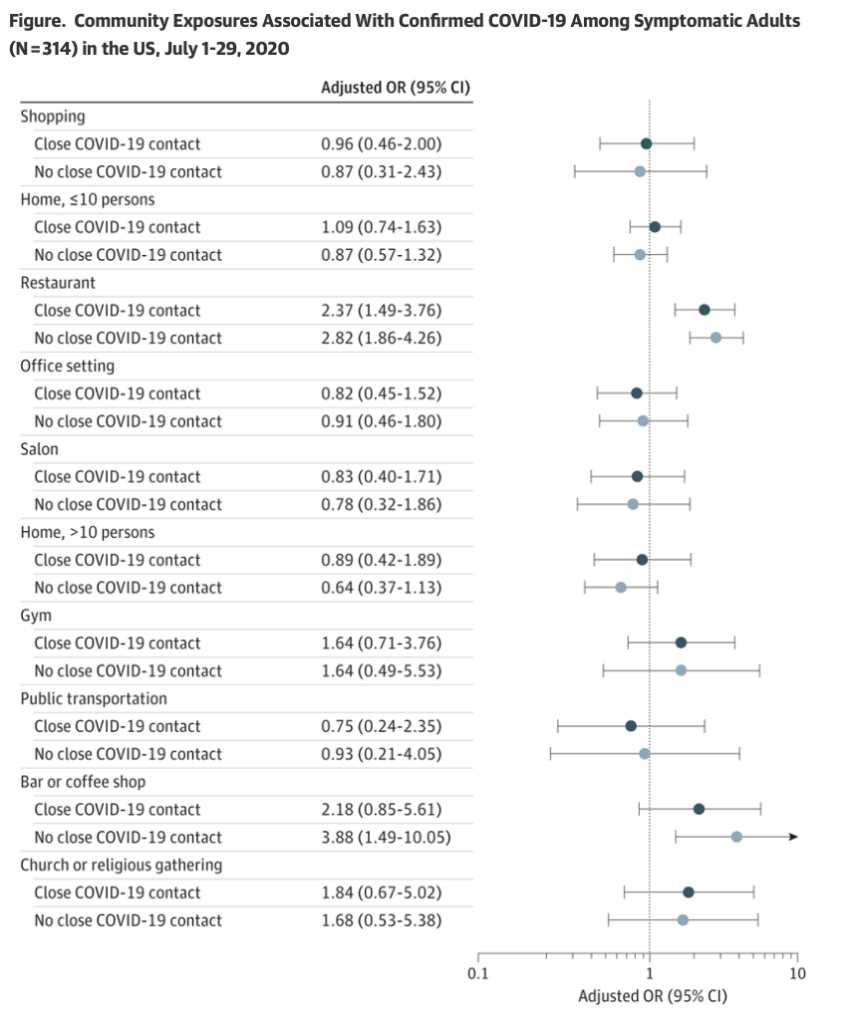
A few other updates on vaccines:
- The FDA granted an Emergency Use Authorization for Johnson & Johnson’s vaccine, the third vaccine in our fight against the pandemic. The White House will send 3.8 million doses of the Johnson & Johnson vaccine next week (following CDC’s final authorization), 2.8 million of which will go out to states and jurisdictions. Using an aggregation of previous formulas, here are the estimated dose allocations.
- Preliminary data from the UK (also known as the SIREN study) is the most promising observational data on magnitude of infection reduction with the Pfizer vaccine. With data from thousands of healthcare workers, there was a 72% infection reduction after 1 dose and 86% after 2 doses. Another study from Israel saw an 89% reduction in transmission after two doses. While we must be careful of sampling bias in these data, we know that vaccines do reduce transmission — the question is by how much.
- VaccineFinder celebrated its launch this week — it is a tool developed in partnership with the CDC to list vaccine sites near you, as well as a supply management tool for providers.
- A new survey from Surgo Ventures broke down different groups who could be considered “vaccine hesitant.” The cost-anxious (14%) group interests me the most — they tend to be younger, live in rural areas and work as essential or frontline workers.

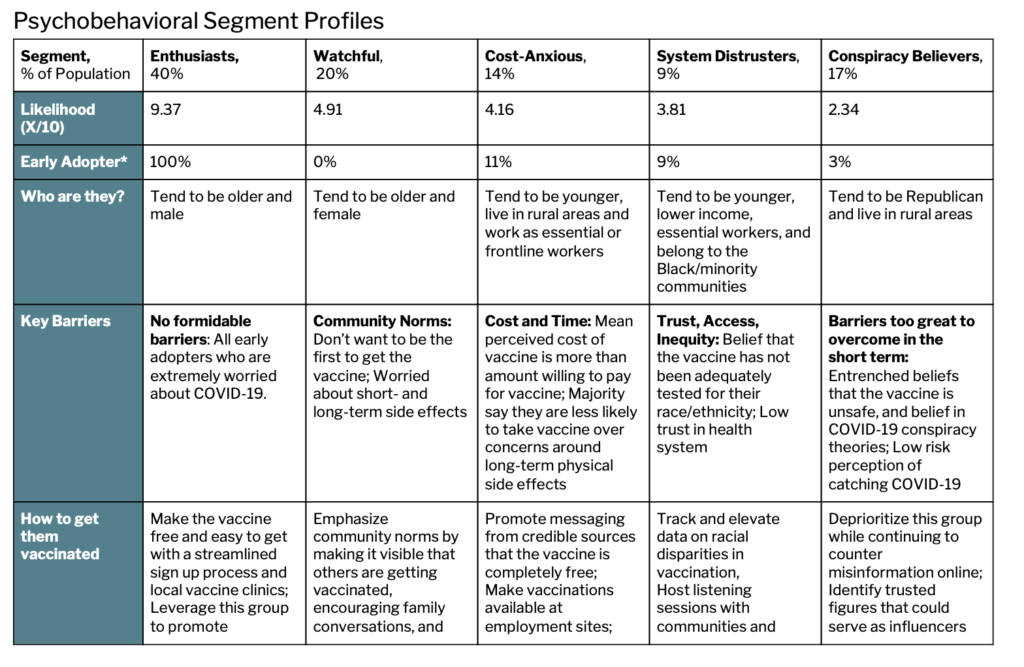
- According to the latest Kaiser Family Foundation poll, more than half of U.S. adults (55%) now say they have already received at least one dose of the Covid-19 vaccine (18%) or they want it as soon as possible (37%).
- “I don’t think I’ve ever had an experience in my career that has felt so promising and so fulfilling,” says Christina O’Connell, a clinic director and vaccinator at the University of New Mexico.
- Last week, an Israeli bar doubled as a Covid-19 vaccination clinic, with free drinks given to those who got the shots.
- Moderna has announced it has completed the development of a variant-specific vaccine candidate.
- The New York Times published an interesting analysis on barriers to accessing vaccines on county and state levels.
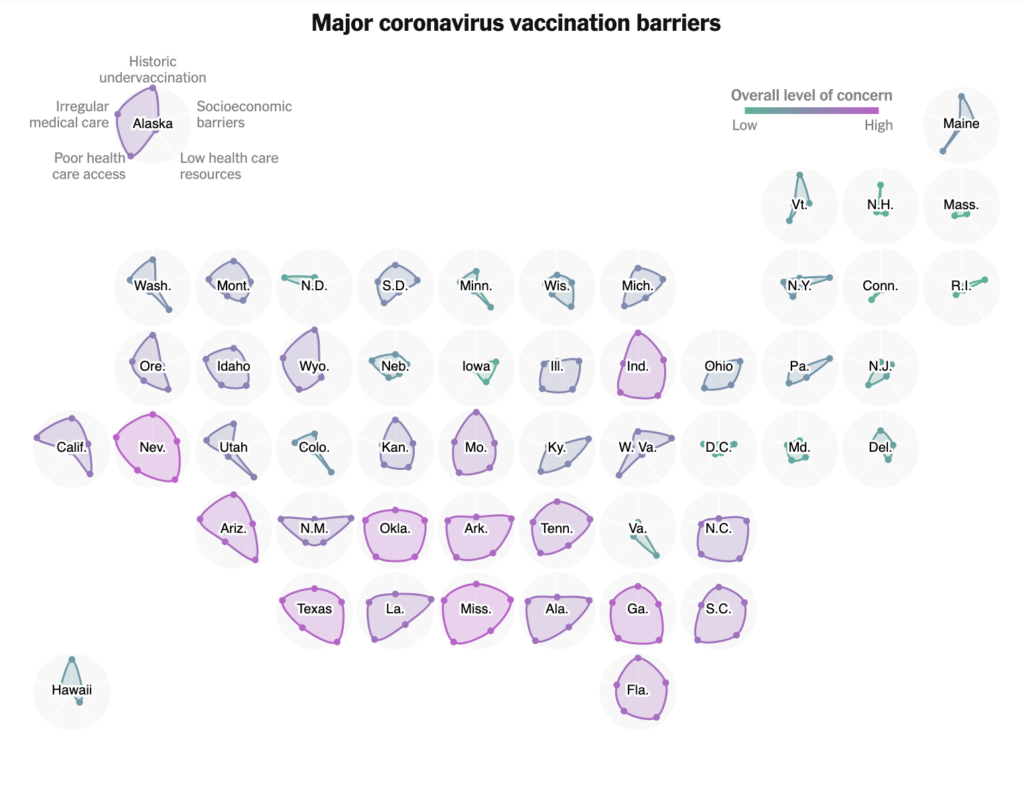
- “To help, rich countries should tithe their vaccine supply to poorer places and negotiate direct purchasing deals with vaccine manufacturers to increase supplies,” Duke Global Health Institute professor Dr. Gavin Yamey writes. “It is in everybody’s interests to act collectively to boost vaccinations.”
- Connecticut and Maine have abandoned previous vaccination plans and now will vaccinate people simply by age bands.
- Pfizer has significantly ramped up production, announcing it will ship 13 million doses per week to the U.S. by mid-March.
- Many Covid vaccination registration and information websites at the federal, state and local levels violate disability rights laws, hindering the ability of blind people to sign up for a potentially lifesaving vaccine, a Kaiser Health News investigation has found.
- According to a study published in The New England Journal of Medicine, there was a 92% reduction in documented infection and 94% reduction in symptomatic Covid-19 seven days after the second dose of the Pfizer vaccine. Showing similar results in a CDC report, the ratio of Covid-19 patients aged ≥70 years requiring mechanical ventilation to those aged <50 years declined 67% from October–December 2020 to February 2021. Vaccines work!
- The U.S. may face a shortage of lab monkeys for future vaccine trials as a result of a recent ban from China.
- In case you need more proof that vaccines work, according to a New York Times analysis, new cases and deaths in nursing homes have fallen steeply, outpacing national declines.
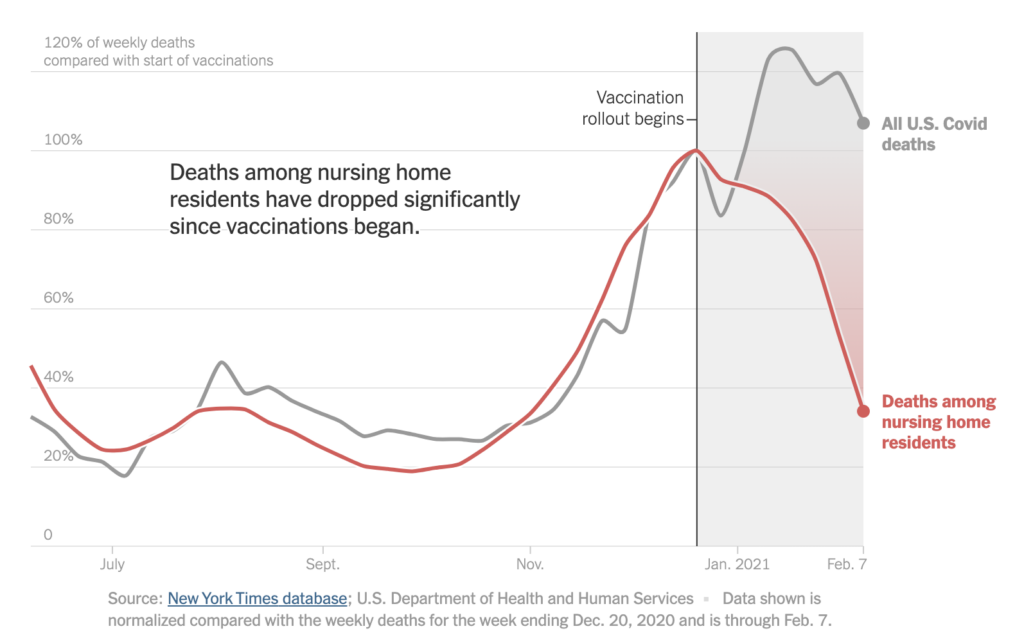
This week marked a significant milestone as the Biden administration commemorated 50 million vaccines in arms since January 20. We have a long road ahead of us, but we are well on our way.
Let’s move on to our discussion of higher education.
Higher education
Despite case counts subsiding nationally, we continue to see outbreaks at colleges, especially some in the Northeast. 6.5% of Dartmouth College students on campus (98) are currently an active case, with 20% in isolation/quarantine. The college has now asked students to remain alone in their rooms as much as possible and to refrain from visiting one another in hallways and common areas. This outbreak shows that despite twice weekly testing, it is behavior that can change transmission dynamics. At Williams College, where the first signs of community transmission were seen earlier in the week, a dorm party was held on Friday night with 80-100 attendees.
One of the most frustrating aspects about all these newer outbreaks (many at smaller schools) is that we have learned from the fall how this virus spreads and colleges need to adapt policies and support accordingly. We need trusted, clear, concise messaging with institutional support. I encourage college leaders to read this piece from The Atlantic contributing writer Zeynep Tufekci and adopt the public health strategies where our nation has repeatedly failed. We need to better explain mechanisms of transmission, adopt a harm reduction approach and not view perfection as the only option. From the data we have gathered through various institutions, the virus is most easily spread at large social gatherings, often maskless. We need to push lower-risk options as much as we can and not let perfect be the enemy of the good.
Here is a roundup of this week’s higher ed news:
- A group of colleges in the Washington, D.C. metro area is collaborating on a new Covid-19 mobile lab testing program that will also serve Baltimore City Public Schools.
- Many colleges have plans for “wellness days” or similar breaks throughout the semester in lieu of a spring break. From this first wellness day at the University of Michigan, it seems that the plan has mixed reviews. Investments in mental health are key, as well as addressing the systemic causes.
- University of Pennsylvania provost Wendell Pritchett estimated that there is a “50-50 chance” that Penn will be able to launch a Covid-19 vaccination effort for students before the end of the semester.
- About half of college students nationally screened positive for depression or anxiety, or both, during the fall 2020 semester, according to a recently published report by professors who study mental health.
- In an unpublished paper reported in The Chronicle of Higher Education, economists found that half of Auburn University’s classes lack capacity for adequate physical distancing, and lower-ranked instructors are more likely to teach in the riskiest rooms.
- Betsy Ladyzhets reported for Science New on strategies that five colleges employed this fall to best control the virus.
- This week, the Yale Daily News reported on a confusing university policy, where students can currently book reservations in the indoor gym but are barred from using off-campus running spots. Especially in light of new CDC studies on gyms, this does not seem to follow risk reduction.
- Of 130 samples that have been able to be sequenced at Boston University, two variants have been detected: one case of B.1.351, first detected in South Africa, and seven cases of B.1.1.7, first detected in the UK.
- According to a UK government study at 5 universities, younger students aged 17-19 were more likely to test positive than older students. Living in a residence hall and sharing a kitchen were also risk factors.
- At UCLA, restaurants have been serving the campus community with autonomous delivery robots.
- An editor at the University of Vermont’s student newspaper recounted her own experience in quarantine housing, where few masks were worn and trash bins were overflowing.
- The New York Times has relaunched its college tracker, with more than 120,000 cases since January 1. Case growth is most prominent at small and medium schools, along with a few larger institutions in California.

The Good Stuff
Let’s roll the clips of the good stuff. In my usual tradition, I feature my favorite stories from the week. Here are my Top 10.
- Former President Jimmy Carter and First Lady Rosalynn Carter have returned to their local church following their vaccinations. “Pastor Lowden gently reminded the members that if they ‘get tackled’ by the Secret Service when approaching the Carters, it would only be because the church was practicing social distancing,” The New York Times reported.
- Infectious diseases expert Dr. Peter Hotez now has a banh mi sandwich named after him at a local Houston restaurant.
- Kevin the peacock, a sassy blue bird in London who mysteriously appeared at the beginning of lockdown last March and became a symbol of hope for locals confined to their homes, has been killed by foxes.
- Lucia DeClerck, the oldest resident of her New Jersey nursing home, tested positive for the virus on her 105th birthday, one day after her second vaccine shot. She credits gin-soaked raisins as the secret to her long life.
- Software engineer Huge Ma, who founded New York City vaccine search site TurboVax, was NY1’s New Yorker of the Week.
- Some of the nation’s best pandemic journalists won Polk Awards this week.
- A wild and ailing sheep found in a forest in Australia, named Baarack by rescuers, has yielded a fleece weighing more than 35 kilograms – nearly half the weight of an adult kangaroo – after being shorn for the first time in many years.
- Lincoln Center in New York City will open outdoor performance spaces and work with blood drives and food banks.
- NASA’s Perseverance rover released a full video of its harrowing descent to Mars.
- During the winter storm, Texas staple grocery store H-E-B provided food, supplies and additional support to struggling Texans.
Conclusion
While case counts are still declining nationally, this coming week in data will be a crucial test to see if the variants have started to take over. Currently, we only see the results of a possible reporting lag; however, more serious issues could be upon us if cases start rising again. With a third vaccine scheduled to be shipped in the next day, we are one step closer to vaccinating our way to normal. Seasonality effects may be felt as the weather gets warmer; we just need to get there.
And no, it is not a good idea to have a mask-optional CPAC in Florida.
I’d like to thank all the student journalists with whom I have the pleasure of working. In the next weeks and months ahead, they will become vital in chronicling their colleges’ paths forward for the spring and beyond. Support their work by reading it.
My best to all for good health.
Like what you see? Don’t like what you see? Want to see more of something? Want to see less of something? Let me know in the comments. And don’t forget to subscribe to the weekly newsletter!
For more instant updates, follow me on Twitter @bhrenton.

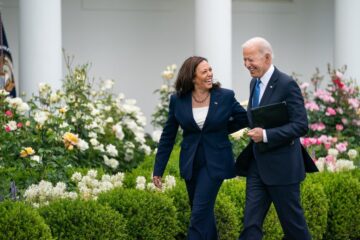

1 Comment
Ally Bensen · February 28, 2021 at 4:01 pm
Thanks for the great updates, Benjy!
Comments are closed.